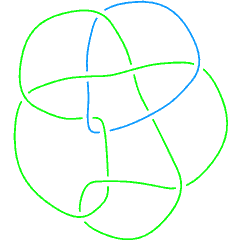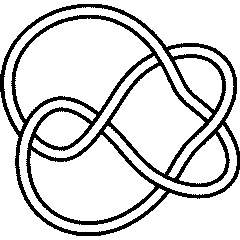Identifying Knots within a List: Difference between revisions
No edit summary |
No edit summary |
||
| (4 intermediate revisions by one other user not shown) | |||
| Line 6: | Line 6: | ||
{{Startup Note}} |
{{Startup Note}} |
||
<!--$$Import["http://katlas.org/ |
<!--$$Import["http://katlas.org/w/index.php?title=IdentifyWithin.m&action=raw"];$$--> |
||
<!--Robot Land, no human edits to "END"--> |
|||
{{In| |
|||
<!--$$SubLink[pd_PD, js_List] := Module[ |
|||
| ⚫ | |||
{k, t0, t, t1, t2, S, P}, |
|||
in = <nowiki>Import["http://katlas.org/w/index.php?title=IdentifyWithin.m&action=raw"];</nowiki>}} |
|||
t0 = Flatten[List @@@ Skeleton[pd][[js]]]; |
|||
<!--END--> |
|||
t = pd /. x_X :> Select[x, MemberQ[t0, #] &]; |
|||
t = DeleteCases[t, X[]]; |
|||
| ⚫ | |||
While[ |
|||
k <= Length[t], |
|||
If[ Length[t[[k]]] < 4, |
|||
t = Delete[t, k] /. (Rule @@ t[[k]]), ++k]; |
|||
]; |
|||
t1 = List @@ Union @@ t; |
|||
t2 = Thread[(t1) -> Range[Length[t1]]]; |
|||
S = t /. t2; |
|||
P = If[S != PD[] && Length[S] >= 3, S, PD[Knot[0, 1]], S] |
|||
]; |
|||
SubLink[pd_PD, j_] := SubLink[pd, {j}]; |
|||
SubLink[L_, js_] := SubLink[PD[L], js];$$--> |
|||
<!--$$Import["http://katlas.org/w/index.php?title=SubLink.m&action=raw"];$$--> |
|||
<!--Robot Land, no human edits to "END"--> |
|||
{{In| |
|||
n = 3 | |
|||
in = <nowiki>Import["http://katlas.org/w/index.php?title=SubLink.m&action=raw"];</nowiki>}} |
|||
<!--END--> |
|||
<!--$$IdentifyWithin[SubLink[Link["L11n150"], 2], AllKnots[]]$$--> |
<!--$$IdentifyWithin[SubLink[Link["L11n150"], 2], AllKnots[]]$$--> |
||
<!--Robot Land, no human edits to "END"--> |
<!--Robot Land, no human edits to "END"--> |
||
{{InOut| |
{{InOut| |
||
n = |
n = 4 | |
||
in = <nowiki>IdentifyWithin[SubLink[Link["L11n150"], 2], AllKnots[]]</nowiki> | |
in = <nowiki>IdentifyWithin[SubLink[Link["L11n150"], 2], AllKnots[]]</nowiki> | |
||
out= <nowiki>{Knot[5, 2]}</nowiki>}} |
out= <nowiki>{Knot[5, 2]}</nowiki>}} |
||
<!--END--> |
<!--END--> |
||
{{Knot Image Pair|L11n150|gif|5_2|gif}} |
{{Knot Image Pair|L11n150|gif|5_2|gif}} |
||
Unfortunately, the program does not provide absolute identification when all the used invariants cannot distinguish between two or more different knots. In that case, a list of possible candidates for <math>L</math> is returned. |
Unfortunately, the program does not provide absolute identification when all the used invariants cannot distinguish between two or more different knots. In that case, a list of possible candidates for <math>L</math> is returned. |
||
Latest revision as of 14:04, 20 October 2013
IdentifyWithin[L,H], whose code is available here, returns those elements from the list of knots , whose invariant matches that of the knot . It can also recognize mirrors and connected sums of the knots in the list. Its options include turning off (on) the search for connected sums with ConnectedSum->False (True) and choosing the invariants to be used in identification by selecting, for example, Invariants->{Jones[#][q]&, HOMFLYPT[#][a,z]&}.
IdentifyWithin can be used together with SubLink to determine the components of a link. For the second component of link L11n150, for instance, we get:
(For In[1] see Setup)
In[2]:=
|
Import["http://katlas.org/w/index.php?title=IdentifyWithin.m&action=raw"];
|
In[3]:=
|
Import["http://katlas.org/w/index.php?title=SubLink.m&action=raw"];
|
In[4]:=
|
IdentifyWithin[SubLink[Link["L11n150"], 2], AllKnots[]]
|
Out[4]=
|
{Knot[5, 2]}
|
 L11n150 |
 5_2 |
Unfortunately, the program does not provide absolute identification when all the used invariants cannot distinguish between two or more different knots. In that case, a list of possible candidates for is returned.

